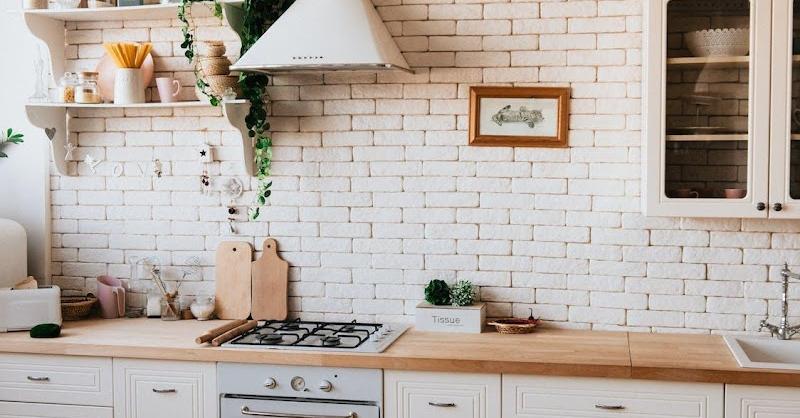In the sunny state of Florida, where the blend of indoor and outdoor living is a way of life, the kitchen often becomes the heart of the home. A kitchen remodel in this vibrant setting is not just about upgrading a space; it’s about creating an area that reflects the lifestyle and aesthetic of the Sunshine State. Whether you’re in Miami’s bustling cityscape or nestled in the quiet bays of Tampa, a well-planned kitchen remodel can significantly enhance your home’s functionality and style. In this article, we explore key kitchen remodeling tips for Florida homes. We’ll balance practicality and style, transforming your kitchen into a functional and charming focal point.
1. Define Your Remodeling Goals:
The first step in any kitchen remodeling project is to clearly define your goals. What are you looking to achieve with your remodel? Are you aiming for more space, an updated look, or enhanced functionality? Your objectives will guide every decision, from layout changes to material selections. Consider factors like the size of your family, your cooking habits, and how much you entertain when setting your goals. A well-defined purpose will streamline the remodeling process and ensure the final result aligns with your vision.
2. Choose the Right Professionals:
Selecting the right professionals is crucial for the success of your kitchen remodel. Look for experienced and reputable contractors who understand your vision and have a proven track record. If you’re seeking high-end finishes and top-quality craftsmanship, consider hiring a luxury kitchen remodels company in St. Petersburg. Such companies specialize in creating bespoke kitchens that blend luxury with functionality. Ensure that the company you choose has good communication practices and a clear understanding of your project’s requirements.
3. Create a Realistic Budget:
Creating a realistic budget is a critical step in the remodeling process. Your budget should reflect the scope of your project and include allocations for different elements such as labor, materials, appliances, and a contingency fund for unforeseen costs. Research average costs for kitchen remodels in your area, and be transparent with your chosen contractor about your budget. This will help prevent overspending and ensure that you get the best value for your investment.
4. Consider Layout and Flow:
The layout of your kitchen is integral to its functionality. A well-thought-out layout can improve efficiency, enhance safety, and make cooking and socializing more enjoyable. Consider the classic kitchen work triangle – the setup between the stove, sink, and refrigerator – to ensure a smooth flow of movement. Also, think about how your kitchen integrates with other parts of your home, especially if you have an open-plan layout. The goal is to create a kitchen that is not only aesthetically pleasing but also practical for everyday use.
5. Selecting Materials and Appliances:
Choosing the right materials and appliances is crucial for both the functionality and the aesthetic of your kitchen. When selecting materials for countertops, cabinets, and flooring, consider durability, maintenance, and style. Granite and quartz, for example, are popular choices for countertops due to their durability and wide range of designs. Similarly, appliance selection should balance quality, functionality, and design. Energy-efficient appliances can offer long-term savings, and modern designs can enhance the overall look of your kitchen.
6. Lighting and Ventilation:
Lighting and ventilation are critical components of a functional kitchen. Adequate lighting enhances the safety and aesthetics of the space. Consider a combination of ambient, task, and accent lighting. Ambient lighting provides overall illumination, task lighting is crucial for areas like countertops and stoves, and accent lighting can highlight architectural features or decorative elements. Ventilation is equally important, especially to manage heat and odors. A quality range hood or an exhaust fan is essential. Additionally, if possible, incorporate natural ventilation through windows or skylights to promote air circulation and bring in natural light.
7. Storage Solutions:
Effective storage solutions are key to maintaining an organized and clutter-free kitchen. Customize your storage to fit your specific needs. This could include pull-out drawers for pots and pans, a spice rack, a pantry for dry goods, or specialized storage for appliances. Think creatively, especially if working with limited space. Utilizing vertical space with tall cabinets or open shelving can provide extra storage options. Well-planned storage not only makes the kitchen more functional but also more visually appealing.
8. Incorporating Technology:
Modern kitchens are increasingly incorporating technology for added convenience and efficiency. Consider smart appliances like refrigerators that can track your groceries or ovens that can be controlled remotely. Other tech options include touchless faucets, built-in charging stations for devices, and under-cabinet lighting that can be adjusted with a smartphone app. While integrating technology, ensure it aligns with your lifestyle and doesn’t overwhelm the kitchen’s design.
9. Aesthetic Details:
The aesthetic details bring your kitchen’s design together. This includes choices like the color scheme, backsplash tiles, cabinet hardware, and fixtures. These elements should complement the overall style of your kitchen. For instance, a bold backsplash can be a focal point in a modern kitchen, while classic hardware can enhance a traditional design. Remember, these details can significantly influence the kitchen’s overall ambiance and style.
10. Sustainable Practices:
Consider incorporating sustainable practices in your kitchen remodel. This can include using eco-friendly materials, energy-efficient appliances, and water-saving faucets. Sustainable remodeling not only benefits the environment but can also lead to long-term cost savings. For instance, LED lighting is more energy-efficient, and sustainable materials like bamboo for flooring or recycled glass for countertops can add unique style elements to your kitchen.
Conclusion:
Kitchen remodeling is a significant undertaking that requires careful planning and execution. By setting clear goals, choosing the right professionals, creating a realistic budget, and considering essential elements like layout, materials, lighting, and technology, you can transform your kitchen into a beautiful and functional space. Remember to pay attention to both the aesthetic details and sustainable practices to ensure your kitchen remodel is not only stylish but also environmentally conscious. With these tips, you’ll be well on your way to creating the kitchen of your dreams.

